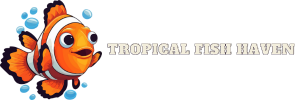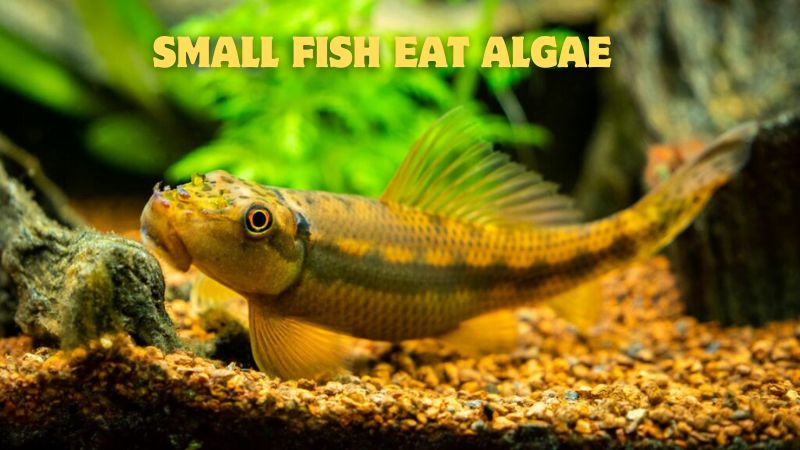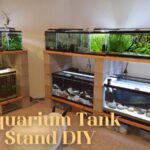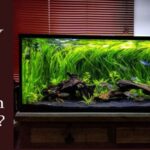The freshwater world is colorful, with countless species of creatures living and growing. In particular, small fish play an important role in maintaining a balanced ecosystem. One of their essential functions is to control algae growth, contributing to protecting the aquatic environment. This article Tropical Fish Haven will introduce some common types of small fish eat algae, helping you better understand their role in the ecosystem and the benefits they bring.
The cause of harmful moss in the aquarium
Types of moss in aquariums mainly include brown algae, black moss, blue-green algae, blanket grass, green moss, hair moss, deer horn algae… Among them, algae that are harmful to aquariums are the most common and develop the earliest. is brown algae. Algae growth can make it difficult for aquatic plants to grow, leading to their gradual death.
The cause of harmful moss in aquariums is mainly due to the decline in tank water quality. The tank has not been changed water for too long or the fish have been fed too much.
Leftover food and fish waste cause Phosphorus or protein levels to increase too high. Leads to brown algae growing strongly in the aquarium. Brown algae often cling to aquatic plants, glass surfaces, and substrates.
Another reason why moss grows in aquariums is because the fish density is too high. Not only does it make the water dirty quickly, it also causes a lack of oxygen in the water. Fish raised too thickly are susceptible to disease. Once an epidemic occurs, it is very difficult to treat and easy to spread. The most suitable ratio is 1L of water corresponding to 1cm of fish.
How to manually kill moss in an aquarium
Handling algae in aquariums manually is also known as the physical method. Use your hands to clean the fish tank. Use a rag, brush, or sponge to scrub the tank walls. Then immediately change the tank water completely, or partially change it if it is not too dirty.
This method of killing moss in aquariums is very quick and effective immediately. But it is very laborious and time-consuming. Furthermore, algae can be left in places you cannot scrub, such as between rocks or between pebbles.
Another way to remove harmful algae in aquariums is to use chemicals, which are very effective. This method can quickly remove algae attached to aquatic plants and driftwood. However, it has a certain effect on the microflora and living organisms in the aquarium.
Some small fish eat algae you should know
Using algae-eating fish in aquariums is a method chosen by most aquarists thanks to its high safety.
This method of raising algae-eating fish in aquariums has little impact on water quality. However, it takes a while to see the effect. Depending on the type of creature the player chooses. Types of algae-eating fish that are commonly raised in aquariums today include:
Tank cleaning fish – glass cleaning fish
Tank cleaner fish is one of the most popular and commercially available algae-eating fish in aquariums. They have a very funny shape. The larger their heads and noses become, the flatter they become, with a chubby body. Their body length can reach 10 – 15 cm.
They are omnivores that require a lot of moss, leaves, and algae that grow at the bottom of the tank. If they run out of algae to eat, they can eat soft leaves in your aquarium.
It is necessary to build a tank floor with suitable materials and a few black rocks at the bottom of the tank so they can find food at night and have a safe place to hide. Keep the water a little agitated and oxygenated.
Pied fish
Pied fish is one of the fish that eats harmful algae in beautiful, slender aquariums. It is a fish that eats algae that are harmful to aquariums and catfish. They are also known by another name: Catfish Whiptail. They have an average length of 10 – 20 cm with a slender, brown body.
It eats most aquarium mosses and algae. However, their diet should be supplemented with algae tablets like Spirulina a few times a week.
Goby fish cleans the tank
This is one of the moss-eating fish species that is popular in aquariums. They live mainly in the middle and bottom water layers. Tank-cleaning gobies are suitable for keeping in fish tanks with many plants. This fish is quite shy so it can live peacefully with many other ornamental fish.
Tank-cleaning gobies can eat harmful moss in the aquarium that sticks to leaves or tank walls without damaging the plants. In addition, they also eat leftover food from ornamental fish. However, you need to be careful if you keep many goby fish in the tank because these fish often cling to other fish to eat slime, easily causing the fish to die.
Pencil fish
Many aquarium owners consider pencil fish to be one of the must-have fish in their tank. It is considered an enthusiastic athlete, a strong swimmer, and an excellent jumper, reaching a length of up to 14cm when mature.
They are one of the voracious algae-eating fish in aquariums. Not only do they eat algae and algae on terrariums and decorations, but they also eat vegetables, dry food, and even fresh food.
Molly fish
Mollyfish are omnivorous fish, so you can feed them foods of animal or plant origin. You can balance your fish’s diet by feeding it crustaceans, mollusks, and insects. In addition, spinach and lettuce should be added to help the fish develop more comprehensively.
In addition, it is also one of the algae-eating fish that is harmful to aquariums. Fish’s favorite food is moss clinging to the tank walls. Therefore, you do not need to spend a lot of time cleaning the tank. However, remember to observe carefully, if some disease-causing parasites appear, the moss should be removed.
Orange snapper
Orange snapper, also known as rose fish, cinnamon apricot snapper… Is one of the healthy algae-eating fish in aquariums and is an easy-to-raise fish suitable for beginners in keeping aquarium fish.
Omnivorous fish range from crustaceans, worms, and aquatic insects to aquatic plants. Fish also eat pellets, sometimes adding food to color the fish.
Final Thoughts
Thus, the article has introduced some common types of small algae-eating fish in freshwater environments. Each fish species has unique characteristics and plays an important role in controlling algae growth and protecting the water environment. The use of small algae-eating fish in aquariums or domestic water filtration systems is an effective and environmentally friendly solution.





